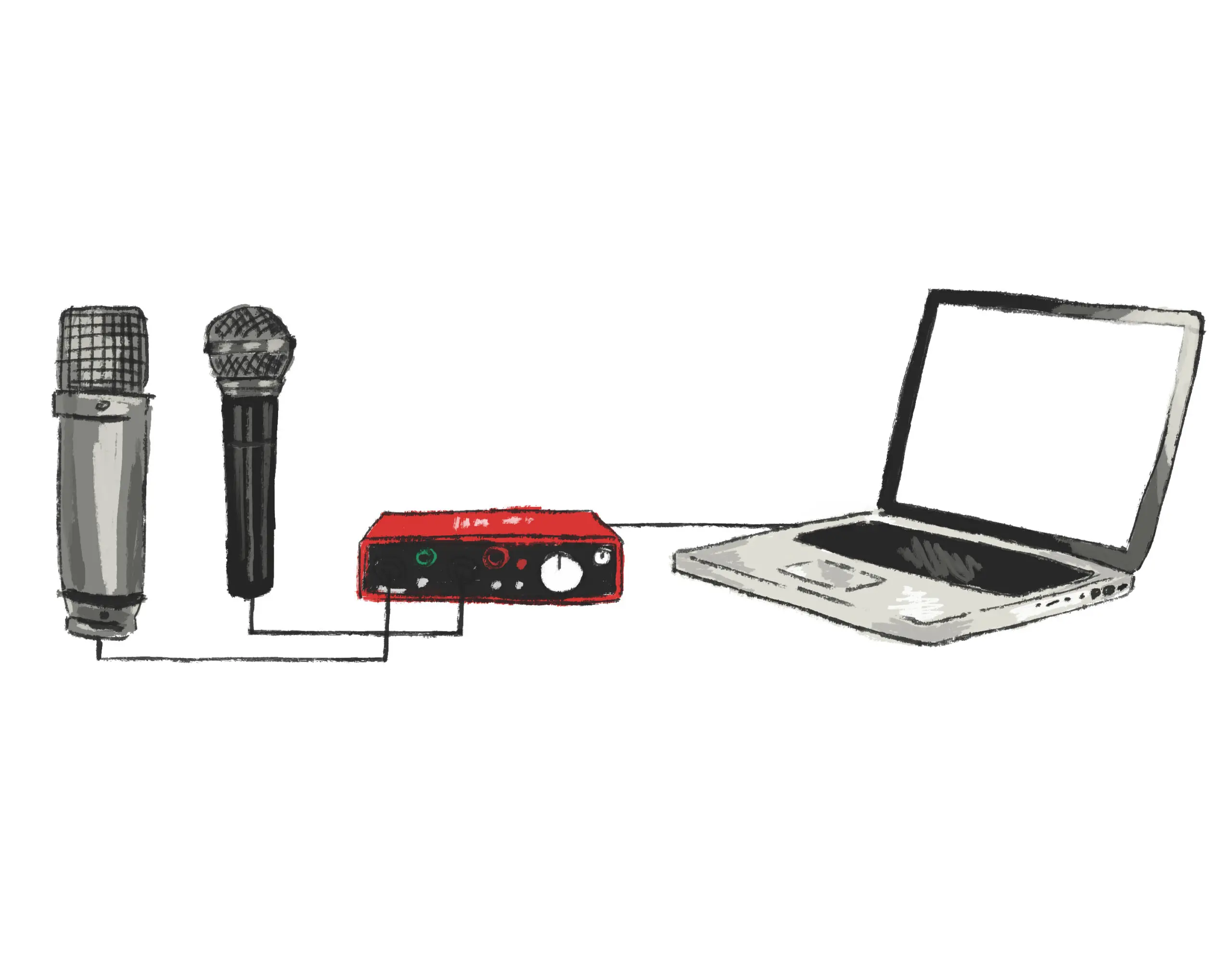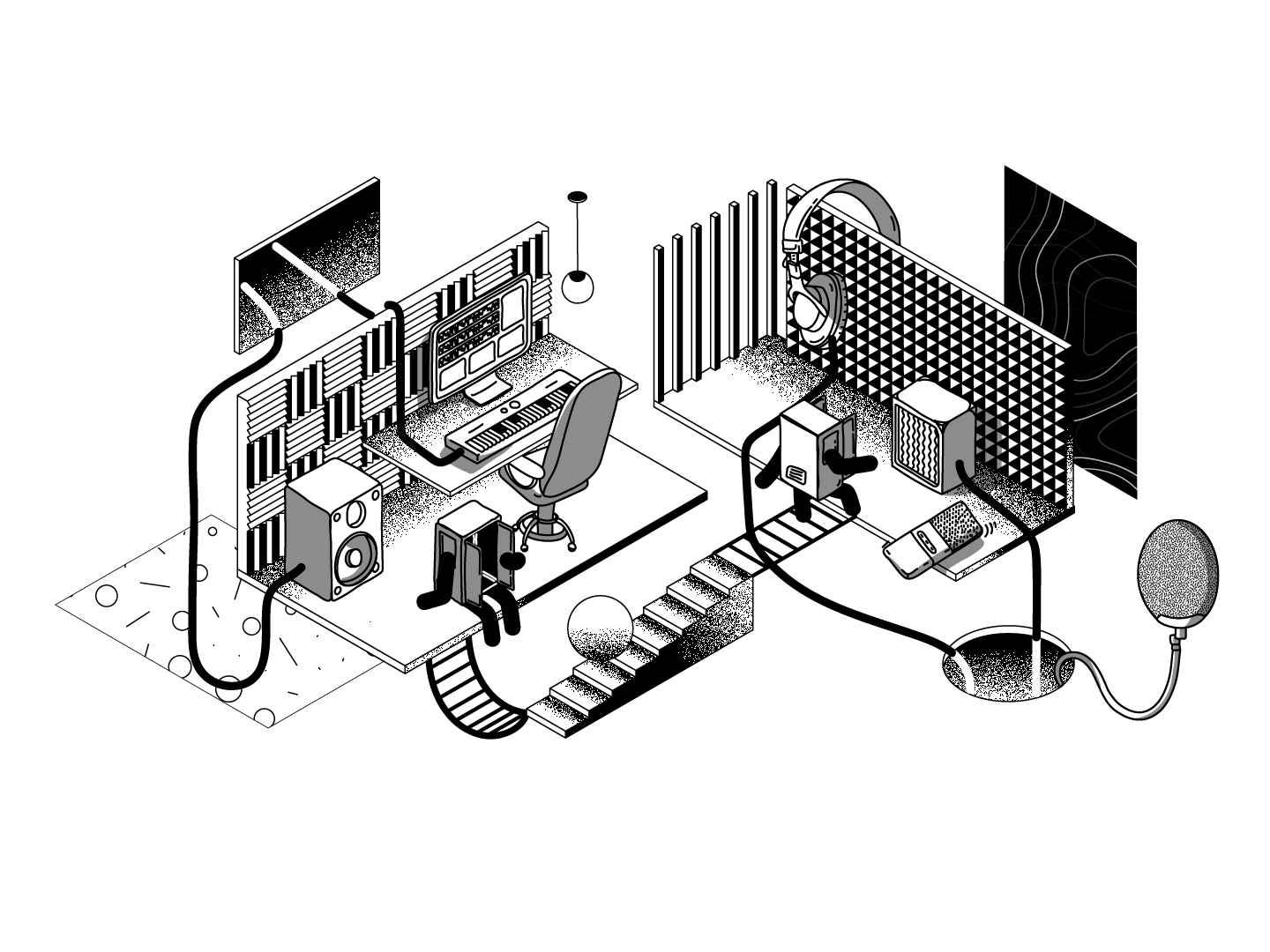
Best voice over microphone: an A-to-Z guide for 2025
With as many options as a candy store, voice over microphones have no one-size-fits-all approach. But by understanding each microphone’s pros and cons and learning from the experiences of successful voice actors, you can find the best voice over microphone for your unique voice style and career.
What’s the best voice over microphone for voice recording?
Typically, voice over microphones doesn’t fit neatly into boxes marked ‘best,’ ‘mediocre,’ or ‘worst.’ Every voice is unique. So, voice actors need a microphone that enhances their style and meets their needs. And with almost infinite options available, navigating the best voice over microphone topic is overwhelming. But the good news is that you’ve found this voice over microphone guide. We cover the A-Z of voice over microphones to help you settle on the best microphone for voice recording.
A voice over microphone is the most critical tool in a voice actor’s recording chain. Why? Because it captures their voice in all its raw, persuasive glory. Even more, than that, a voice acting microphone highlights the nuances and subtleties of a voice. And when combined with the selling power of storytelling, it can impress clients, leading to repeat bookings. From audiobooks to commercials or something else. That’s why we’re bringing you tips and advice from VO pros – because there’s no best voice over mic, but there is the best voice over mic for you!

Voice actor spotlight: Mics of the round table
Kenita Hill is a top performer on Voice123, ranking in the top 10% of voice actors. Coming from 25 years in the healthcare industry, and being a Voice123 member since November 2020, she brings insight as a new, successful voice actor in this microphone guide. She too, found it difficult to choose her first microphone. “It’s overwhelming almost, really is, to find something that fits because they say if you have a deeper voice, you get a certain kind of microphone. If you have a higher pitched voice, this type of microphone works for you. So it’s really tricky,” she says.

Voice actor spotlight: Mics of the round table
Kabir Singh is a top performer on Voice123, and has been a member since 2010. He brings insight as an experienced voice actor in this microphone guide. “The answer’s much different than it was pre-COVID. I would encourage you to go down to something like a guitar center [and] try out different mics. They let you play around with mics once in a while… Now, I would say maybe rent one or two different mics. You can rent them online, …rent one that’s shotgun, rent one that’s omnidirectional … hear it in your space. That is the best way. Otherwise, you’re just kind of guessing.”
How to choose the best microphone for voice over
Choosing the best microphone for voice over is like walking into an art store; you’ll find options that range from eye-wateringly expensive to the everyday radio shack variety. And while some pros swear by their Blue Yeti’s ability to get them jobs, others prefer a high-end Royer.
Your best bet at finding the perfect voice over microphone is through trial and error by comparing and exploring various sound options. Familiarizing yourself with voice over microphone options eliminates unnecessary time window shopping mics you’ll never need.

Sometimes you’ll hit the jackpot with your voice over microphone instantly. But don’t despair if you end up with one you can’t want to upgrade. Luckily, voice over microphone differences are subtle and won’t jeopardize your job security immediately. It can, however, affect your vocal sound depending on your natural pitch and tonal quality. So, invest in a voice over microphone that suits your voice. And the good news is that you don’t need to start off with a lot of capital; there are plenty of used/second-hand options available.
Different types of voice over microphones
Different types of microphones include dynamic, condenser, ribbon, and USB, the four most common voice over microphones on the market. Here’s a breakdown of each one.
1. What is a dynamic microphone?
A dynamic microphone is a durable mic for recording loud sounds like drums or electric guitars, podcasting, or live performances. Like the Shure SM58 at $99, Sennheiser MD421-II at $379, and Electro-Voice RE20 at $449.
2. What is a condenser microphone?
A condenser microphone is a sensitive and delicate mic ideal for recording quieter sounds like vocals, acoustic guitars, or orchestral instruments. Like the AKG Pro Audio C214 at $369, Audio-Technica AT4053b at $599, and Neumann TLM 103 at $1,100.
3. What is a ribbon microphone?
A ribbon microphone is known for warm, vintage sound and recording brass or woodwind instruments, vocals, or guitar amps. Like the Cascade Fat Head II at $379, AEA R84 at $1,099, and Royer R-121 at $1,295.
4. What is a USB microphone?
A USB microphone is a plug-and-play mic for computers, and it’s popular for podcasting, live streaming, or home recording. Like the Blue Yeti at $129, Audio-Technica AT2020USB+ at $149, and Rode NT-USB at $169.
5. What is a studio microphone?
A studio microphone is a high-quality mic for professional recording in a studio environment to record vocals or musical instruments. Like the Audio-Technica AT4053B at $600, Neumann TLM 103 at $1,100, and AKG Pro Audio C414 XLII at $1,100.
Note that prices and availability depend on location and model type. So, let the key point of this microphone guide be ‘Don’t invest in the voice over microphone that works for other professionals. Opt for what works for you.’
Voice over microphone accessories
Microphone accessories are a necessary tool that helps refine and elevate the quality of the end product. Just like how a chef’s utensils help him make amazing dishes, voice over microphone recording accessories can help you create the perfect voice over. Here are some common ones:
- A pop filter is a shield that reduces plosive sounds like “P” and “B” in vocal recordings. Options include Nady MPF-6, $8-$10, and Stedman Proscreen XL Pop Filter, $90-$100.
- A shock mount is a suspension system that isolates the microphone from vibrations and handling noise. Options include Neewer Shock Mount, $10-$15) and Rycote InVision USM Studio Microphone Shock Mount, $120-$150).
- A windscreen is a foam cover that reduces wind and other environmental noises. Options include Mudder Foam Microphone Windscreen, $5-$10) and Sennheiser MZW441 Pro Foam Windshield for MD441 Microphone, $50-$60.
The best voice over microphones for Mac and Windows
Your specific recording needs, budget, and computer are unique to you. So, choose a voice over microphone that adapts to your vocal needs. Here are some common options that work on Mac and Windows.
For Mac:
- The Blue Yeti is an easy-to-use USB microphone with multiple polar patterns and a built-in headphone jack for podcasting, voice over work, and live streaming.
- The Audio-Technica AT2020USB+ is a high-quality condenser microphone with a cardioid polar pattern and a wide frequency response range that directly records vocals and acoustic instruments to Mac.
For Windows:
- The Shure SM7B is a professional-grade dynamic microphone with a smooth, warm sound for broadcasting and music production that requires an audio interface to connect to Windows.
- The Rode NT1-A is a popular condenser microphone known for its clarity and low self-noise that has an XLR connector and requires an audio interface to connect to Windows.
Spotlight on the community: Women on Mic Project
The COVID-19 pandemic has definitely made it hard to do anything in person… so for us, finding this resource has been incredible & we’d like to highlight it:
The Women on Mic Project is creating a free to access audio resource of raw spoken word audio samples recorded by women on various types/brands of microphones that they have access to. The aim is to help women (and others) hear a reference of other female voices on different microphones to help them make decisions when they are purchasing or deciding which microphone to use.
What is an audio recording chain?
An audio recording chain is a chain that connects the mic, audio interface, and digital audio workshop (DAW). This 3-part chain is vital because all 3 elements are variables that affect your voice over sound.
The DAW, for example, influences your mic sound. Kabir says that “each DAW has its own plugins, stuff that makes your mic sound better, or make your [voice] sound better. A plugin might have a noise gate, and that’s important for certain microphones.”

“Like I mentioned, if you had a certain microphone that’s picking up [sound from] all directions, and you didn’t have the [recording studio] like I did… then you might incorporate a plugin such as noise gate. The noise gate might help you cut that noise out in the background.”
“…As the business grows, you want to invest back into the business… so it’s natural to feel like, ‘let me reinvest in a new microphone, let me go and try some new stuff…” – Kabir Singh
So a voice over microphone is one aspect of a much bigger picture.
Every voice sounds different on every mic; that’s the nature of the beast – the human voice. As the uniqueness of human voices is infinitely varied, be open-minded in your mic selection. Recognizing that every purchase and trial experience is different. But whichever voice over microphone you pick, take care of it, and it’ll serve you well for years to come.
Debunk the concept of ‘best microphones for voice over’
While there’s always an opinion on the best microphones for voice over or why XLR trumps USB, keep one thing in mind. A voice over microphone is just a tool. One that voice actors use to emote with the voice and provide an auditory experience. Some voice actors prefer to create that experience with the shiny nickel sheen of the Neumann TLM103 or the shape of the Sennheiser Shotgun. But it could also be the passion and authenticity of the voice actor heard and felt in a voice over?
While it’s important to glow in the aftermath of your voice over microphone purchases, it’s also important to remember that having a successful voice over career relies more on your skill as a voice actor and a business person. Because no super premium mic can ever save someone from subpar voice acting or procrastinating in their voice over business. Along with the tools, the mindset must also be artistically inclined and business-oriented
How to get the most value out of a voice over microphone
Ultimately, not everybody is going to know how to get the same value out of a top-quality, premium mic like the Neumann U87 — retailing at around $3600 USD. Buying it as a beginner is like giving a grand piano to a child who’s still taking piano lessons. Unless the voice talent is like a child piano prodigy, they’re not going to get the value of a premium mic.
So no matter which price point you’re at, whether it’s entry-level at $200 or premium at $3600, knowledge and skill are what elevate performance on the mic. This brings us to our second point. Voice over entrepreneurship is the foundation of a successful voice over career, not fancy gadgets and top-tier equipment, although they certainly help when you’re at the appropriate level.
Experimenting and sampling microphones is your best bet when determining the best mic for you. Otherwise, it’s helpful to watch mic comparison videos with a voice similar to yours and to imagine how your voice might sound if you were testing them. It’s even more helpful to remember that hearsay about the best microphone for voice acting can only mean so much to your mic-choosing decision.
Share this post!
A blog owner yourself? Relevant links to quality sites will help your performance on search engines. If your readers will benefit from the services or information on The Booth's Voice over Guide, please consider linking to this post or the guide itself.


